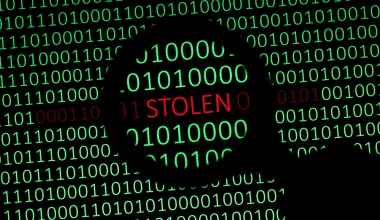Introduction:
The software supply chain is a key component in the dynamic field of software development. But as applications get more complicated and third-party components are integrated, enterprises are becoming increasingly concerned about the security of this supply chain. In this comprehensive guide, we will delve into three powerful strategies to fortify your digital fortress and supercharge your software supply chain security.
- Implementing Robust Code Review Practices:
The Foundation of Security:
The journey to a secure software supply chain begins at the code level. Identification and mitigation that may vulnerabilities early in the development lifecycle are made possible by using a strong code review procedure.
a. Automation and Efficiency:
Integrate automated tools into your code review process to catch common security issues. These tools analyze the codebase for known vulnerabilities, providing a quick initial assessment. While automated checks are essential, they should complement rather than replace manual reviews.
b. Human Expertise:
Manual code reviews conducted by experienced developers add a layer of depth to the security assessment. Developers can identify nuanced vulnerabilities that automated tools may overlook. Establish clear coding standards and provide regular security training to empower your development team in recognizing and addressing security concerns.
c. Continuous Integration:
Integrate security into your continuous integration (CI) pipeline. Utilize static analysis tools that automatically scan code for security vulnerabilities with each new commit. By ensuring that any issues are discovered and resolved throughout the development phase, this lowers the likelihood that vulnerabilities will make their way into the final product.
- Managing and Monitoring Dependencies:
The Drawbacks of External Reliances:
Libraries and frameworks are examples of frequent external dependencies in the networked software world of today. While these components accelerate development, they also introduce potential security risks.
a. Dependency Tracking:
Implement a robust system for tracking dependencies throughout the development lifecycle. This system should identify all third-party components, including their versions and licenses. Regularly update dependencies to the latest, most secure versions and retire outdated or vulnerable components.
b. Automated Dependency Scanning:
Leverage automated tools like OWASP Dependency-Check or Snyk to scan your dependencies for known vulnerabilities. These tools provide insights into potential risks associated with each dependency, allowing you to make informed decisions about their usage. Automate the process of identifying and addressing vulnerable dependencies to maintain a secure software supply chain continuously.
c. Continuous Monitoring:
Security is an ongoing process. Implement continuous monitoring to stay abreast of emerging threats and vulnerabilities. Regularly review and update your software supply chain security policies based on the latest threat intelligence and industry best practices.

- Enforcing Access Controls and Secure Configuration:
Limiting Exposure and Strengthening Defenses:
Unauthorized access and insecure configurations can jeopardize the integrity of your software supply chain. Enforcing strict access controls and secure configurations is paramount for maintaining a robust defense.
a. Principle of Least Privilege:
Adopt the principle of least privilege to limit access to your software supply chain. Grant individuals only the minimum level of access required for their roles. Regularly review and update access permissions to ensure alignment with organizational changes.
b. Secure Configuration Management:
Implement secure configuration management practices across your development and production environments. Adhere to industry best practices and security guidelines for configuring software components. Regularly audit and update configurations to address any newly identified security vulnerabilities.
c. Automated Compliance Checks:
Utilize automated tools to conduct regular compliance checks on your configurations. These tools can identify deviations from secure configurations and flag potential security risks. Automation ensures consistency and reduces the likelihood of human error in configuration management.
Conclusion:
Securing your software supply chain is not a one-time task but an ongoing commitment to proactive measures and continuous improvement. By implementing robust code review practices, managing and monitoring dependencies, and enforcing access controls and secure configurations, organizations can build a formidable defense against potential threats.
Increasing the fortification of your digital castle is not only a recommended practice, but also a strategic need in a period where cyber threats change constantly. As you embark on the journey to supercharge your software supply chain security, remember that the key lies in a holistic approach that combines technology, human expertise, and vigilant monitoring to safeguard the integrity of your software applications.







